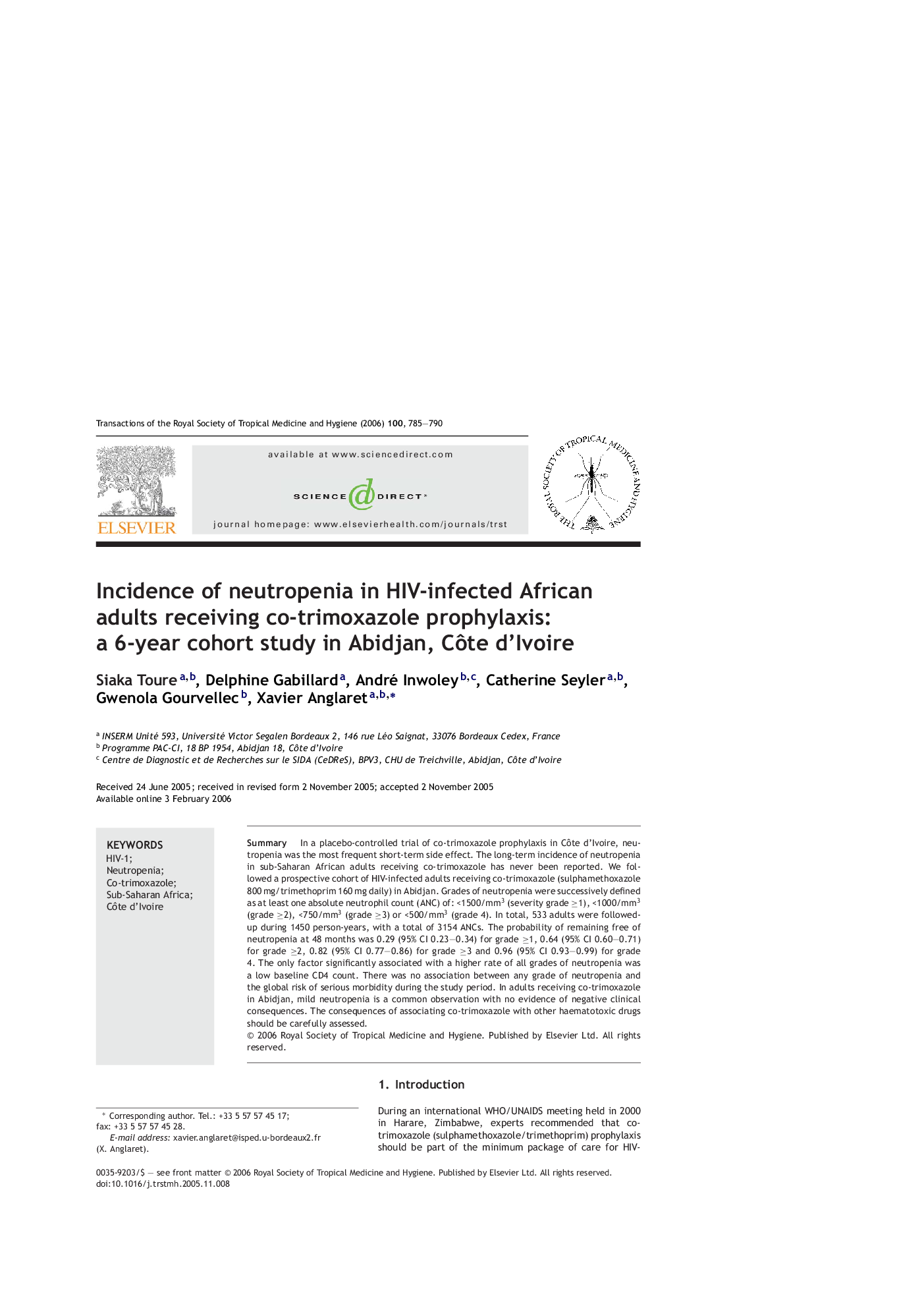| Article ID | Journal | Published Year | Pages | File Type |
|---|---|---|---|---|
| 3421170 | Transactions of the Royal Society of Tropical Medicine and Hygiene | 2006 | 6 Pages |
Abstract
In a placebo-controlled trial of co-trimoxazole prophylaxis in Côte d'Ivoire, neutropenia was the most frequent short-term side effect. The long-term incidence of neutropenia in sub-Saharan African adults receiving co-trimoxazole has never been reported. We followed a prospective cohort of HIV-infected adults receiving co-trimoxazole (sulphamethoxazole 800 mg/trimethoprim 160 mg daily) in Abidjan. Grades of neutropenia were successively defined as at least one absolute neutrophil count (ANC) of: <1500/mm3 (severity grade â¥1), <1000/mm3 (grade â¥2), <750/mm3 (grade â¥3) or <500/mm3 (grade 4). In total, 533 adults were followed-up during 1450 person-years, with a total of 3154 ANCs. The probability of remaining free of neutropenia at 48 months was 0.29 (95% CI 0.23-0.34) for grade â¥1, 0.64 (95% CI 0.60-0.71) for grade â¥2, 0.82 (95% CI 0.77-0.86) for grade â¥3 and 0.96 (95% CI 0.93-0.99) for grade 4. The only factor significantly associated with a higher rate of all grades of neutropenia was a low baseline CD4 count. There was no association between any grade of neutropenia and the global risk of serious morbidity during the study period. In adults receiving co-trimoxazole in Abidjan, mild neutropenia is a common observation with no evidence of negative clinical consequences. The consequences of associating co-trimoxazole with other haematotoxic drugs should be carefully assessed.
Related Topics
Life Sciences
Immunology and Microbiology
Applied Microbiology and Biotechnology
Authors
Siaka Toure, Delphine Gabillard, André Inwoley, Catherine Seyler, Gwenola Gourvellec, Xavier Anglaret,
